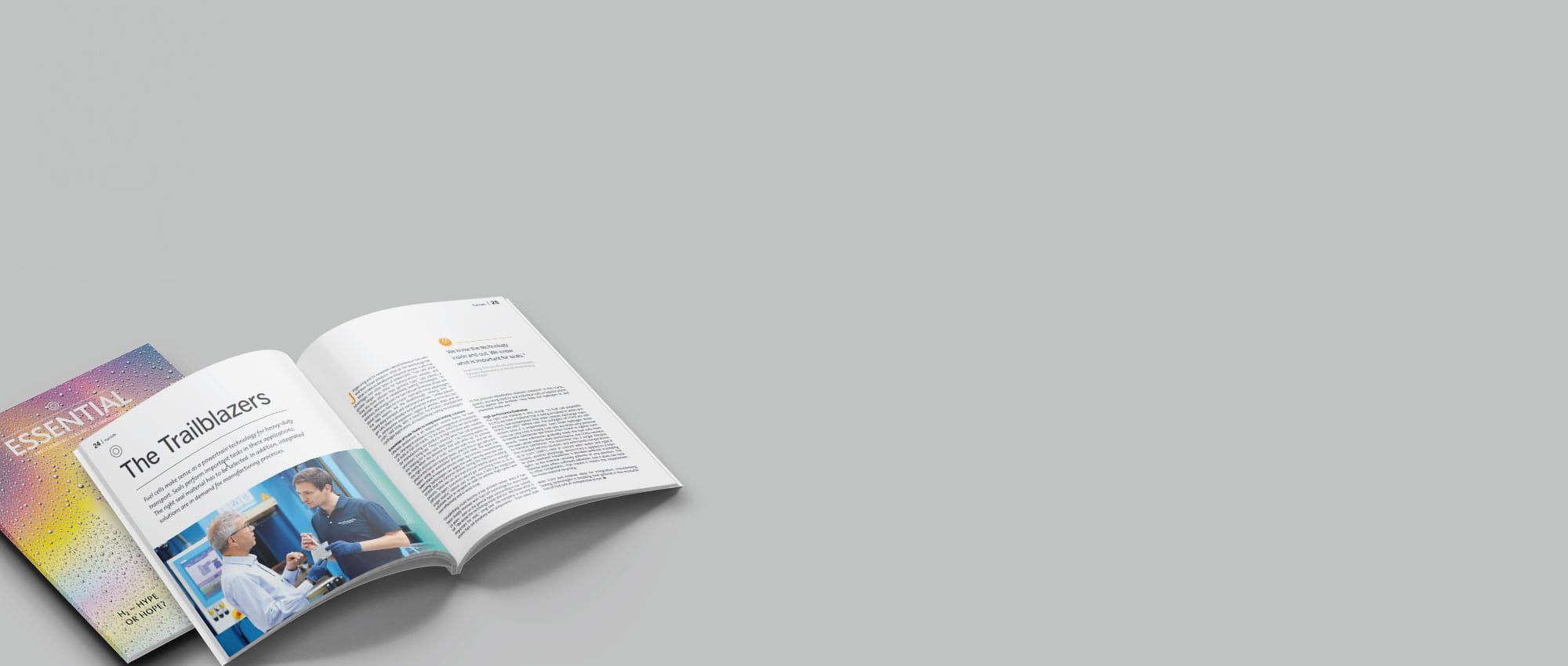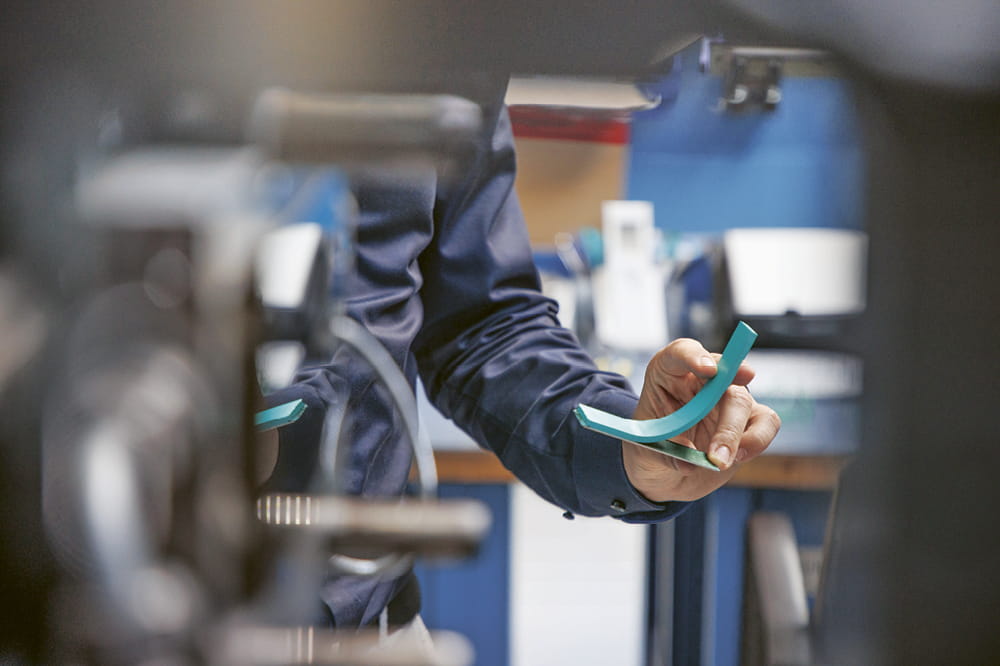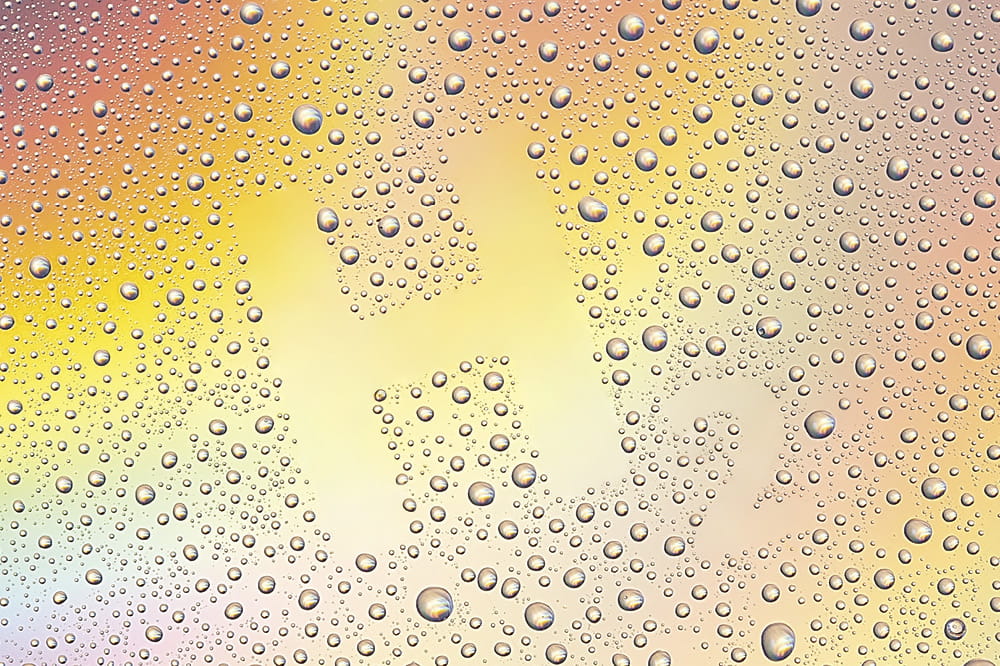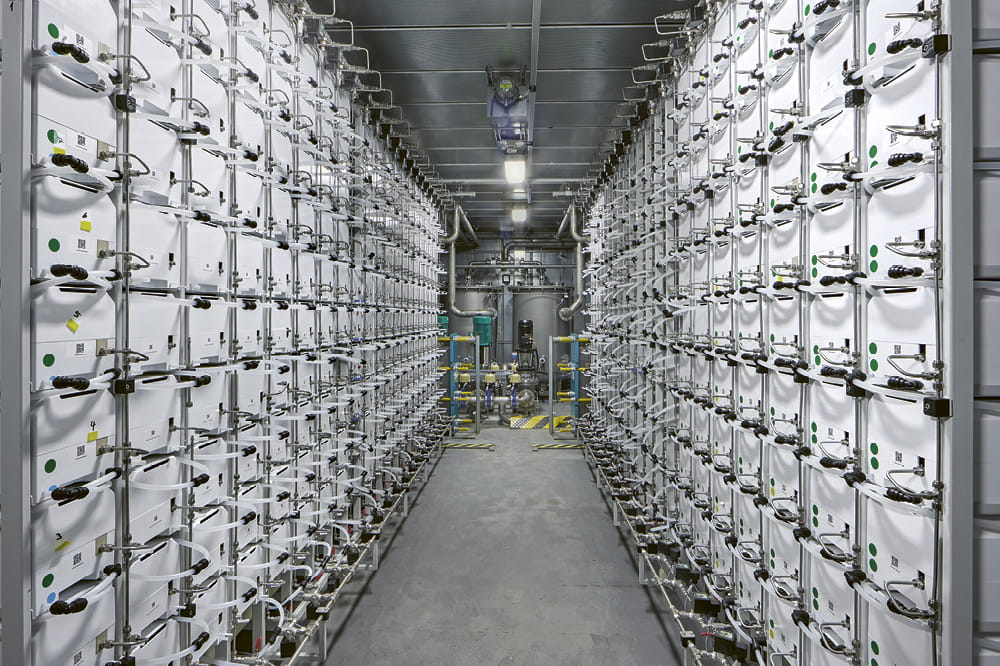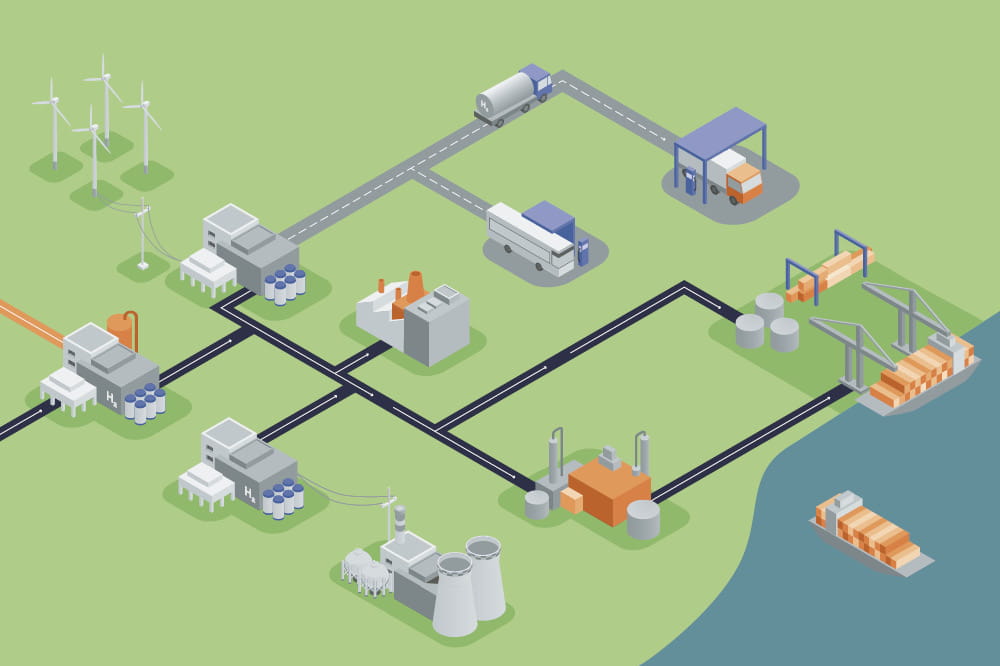Obtain news and background information about sealing technology, get in touch with innovative products – subscribe to the free e-mail newsletter.

Tender Leaves amid Mountains of Trash
Plastic trash from around the world ends up in Vietnam. At the same time, a new generation of innovative city-dwellers is discovering its ecological conscience. Are rice-flour straws and leaf-based packaging suitable solutions for the rest of the world? A visit to Southeast Asia.
It seems as though it would be like eating uncooked pasta. The straws have quite a nice bite. After spending hours in cold water, they do become a bit curved at their lower end. But they are still far from “al dente.” And really, who nurses a drink that long? Media reports have described the latest development from a Vietnamese firm as an “edible straw.” But given their semi-raw state, they aren’t something to nibble on as though they were snack sticks, the manufacturer says.
But the straws are certainly compostable, making them an environmentally friendly alternative to plastic. Vietnam’s new eco-straws are made from rice flour, dyed with natural ingredients such as beets, sesame and spinach. HungHau Foods experimented at length to come up with a recipe for straws that were neither too brittle nor too limp, according to Vo Minh Khang, the company’s Managing Director. HungHau Foods used its spaghetti factory in Sa Dec in the Mekong Delta to make the straws. It now has a capacity of about a million rice flour straws a day, some of which are sold abroad.
But it is not just compostable straws that are calling attention to the dawn of Vietnam’s environmental consciousness. Almost coincidentally, the Hanoi food dealer Bac Tom came up with the idea of no longer selling lettuce and herbs in plastic bags – the foods are now wrapped in plant leaves. “We normally provided plastic packaging with our logo on it to farmers who delivered vegetables to us,” said Bac Tom Manager Tran Minh Duc. “Once, when we didn’t provide enough packaging, a farmer sent us vegetables wrapped in la dong leaves.” A return to the country’s roots, so to speak. In Vietnam, sticky rice cakes have been wrapped in this plant-based packaging, which resembles banana leaves, from time immemorial. The cakes are a traditional New Year’s delicacy. “That went down very well with many of our customers. Some of them even shot selfies with the leaf wrapping,” Duc said. He says offering at least some of his wares in leaf-based packaging is his small contribution to a rewarding trend that is slowly catching on in Vietnam. “We are seeing more and more people using their plastic bags multiple times or bringing sacks made of a different material with them,” he said.
We want to awaken people’s consciousness of the problem.
Nguyen Viet Dung, Leiter der Ocean Trash Campaign in Vietnam
The Land of Plastic Bags
Rice straws and leaf packaging cannot save the ocean from plastic trash, however. In light of the huge amounts of garbage piling up in all of Southeast Asia or wafting through the oceans, these efforts are a drop in the bucket at most. But they may be a stimulus for something far greater: “Initiatives of this kind can help awaken an awareness of the problem,” says Nguyen Viet Dung, who heads the Vietnamese operations of the Ocean Trash Campaign of the environmental group Pacific Environment. He already sees people rethinking the issue. Still, it can’t be denied that plastic pollution is a huge problem in rural areas. “Plastic bags are inexpensive, practical and ubiquitous in all the markets.”
Vietnam’s own trash problem is hard to overlook. Its entire 1,800-mile coastline looks like one long landfill, from the world-famous UNESCO heritage site Halong Bay, through the beaches of the central coast, to the tourist island of Phu Quoc in the far south, and everywhere in between. In Dalat, a vacation spot in the central highlands, heavy rains unleashed “an avalanche of trash” – part of a huge landfill on a ridge slid away and smothered the vegetable gardens below with a 4-yard-high layer of stench.
An estimated 8 million tons of plastic trash end up in the world’s oceans each year, more than half of which come from China and four Southeast Asian nations, according to a study published by the environmental group Ocean Conservancy. They are all countries with a large share of their populations living near the coast. They have also experienced enormous economic growth recently. Their waste disposal systems simply cannot keep up with their soaring consumption of the single-use plastic associated with rising prosperity. Vietnam ended up in fourth place among the five top ocean litterers, coming in ahead of Thailand and trailing only China, Indonesia and the Philippines.



Is Vietnam Becoming the World’s Dump?
In view of this vast amount of plastic trash, it may seem paradoxical that Vietnam’s powerful plastics industry is dependent on imports of old plastic from abroad. The aforementioned flood of plastic bags, for example, consists of recycled plastic – and 80 percent of this raw material is imported, with large amounts coming from Japan, the United States and Germany.
The country has too little of the waste management and recycling infrastructure needed to manufacture plastic from its mountains of trash on its own. That’s why the country has to rely on imported plastic. In addition, its own old plastic is often of low quality. Only about 20 percent is retrieved by trash gatherers and sold to small, informal recycling shops, which turn it into plastic pellets as a raw material. The bulk ends up in landfills or in the ocean, or it is incinerated.
Imports of all plastic have increased enormously since China, once the world’s biggest importer of waste, blocked further imports of old plastic in January 2018. Over a period of two decades, China had imported about 45 percent of the world’s plastic trash – now this trash from the West has had to be rerouted to new customers, largely in Southeast Asia. It’s no wonder that these countries are nearly choking on overwhelming quantities of plastic. Last year, Vietnam tightened up its inspections and requirements for importing old plastic, which caused thousands of shipping containers full of the material to be jammed up in the ports. The Vietnamese plastics industry, one of the fastest-growing sectors over the last decade, feared losses in the millions if Vietnam were to ban plastic imports at a single stroke.
We are producing a million drinking straws per day from rice flour.
Vo Minh Khang, CEO HungHau Foods
Banning Plastic in Halong Bay
Local NGOs are trying to battle Vietnam’s own trash tsunami with programs such as beach cleanups and informational campaigns. The authorities are taking action as well. For example, in Halong Bay, officials planned to ban plastic at all tourism-related organizations. “But the country needs sustainable solutions to make long-term changes and to reduce the supply as well as the demand for single-use plastic,” Dung said. But the country still has no official plan, he said. People want to learn from the experience of other countries like South Korea and from their notions of manufacturer liability, he adds. “That all takes time. An important focus will be to sensitize people’s awareness and urge them to avoid plastic or use it less, reuse it multiple times and ultimately recycle it.”
Meanwhile, work is continuing on a small scale. The Bac Tom shop is still not completely plastic-free, and its customers are still not very receptive to alternative packaging, especially for meat, according to Duc, the shop manager. But he still wants to expand the concept to as many products as possible. And he is not the only one in Hanoi to join the eco-movement. Leaf wrappers have reached the shelves of large supermarket chains. The straw makers at HungHau Foods are already planning to produce environmentally friendly spoons and forks – and their rice flour straws are in the process of conquering the world’s soft drinks and shakes. They are being exported to the United States, the United Kingdom, Portugal, Hong Kong and Malaysia, among other countries.
Read more about "Sustainability" at Freudenberg Sealing Technologies.
This article originally appeared in ESSENTIAL, Freudenberg Sealing Technologies’ corporate magazine that covers trends, industries and new ideas. To read more stories like this, click here.
More Stories About Sustainability
